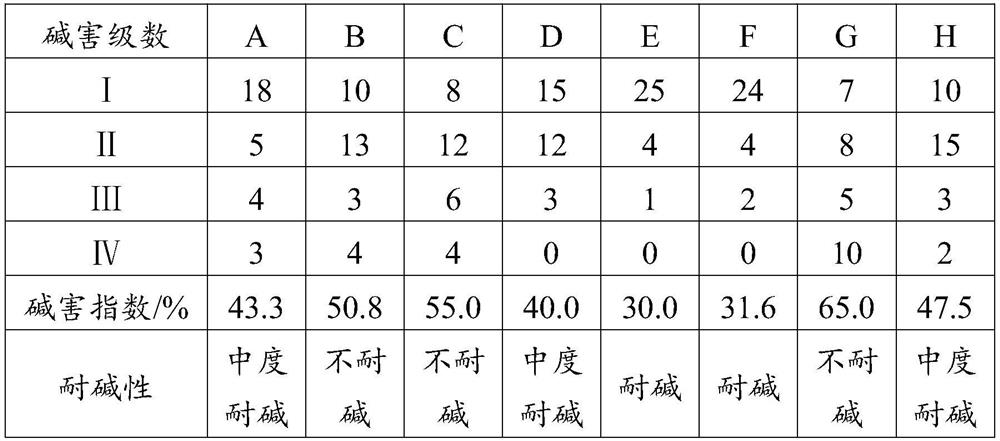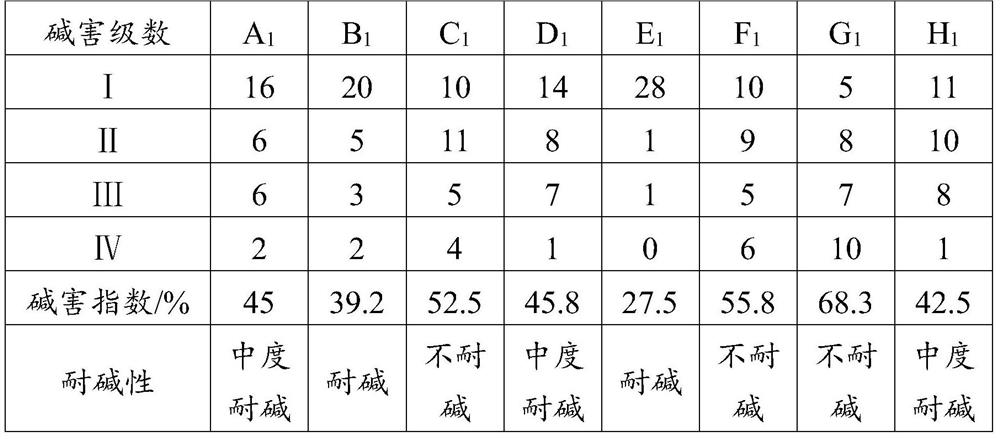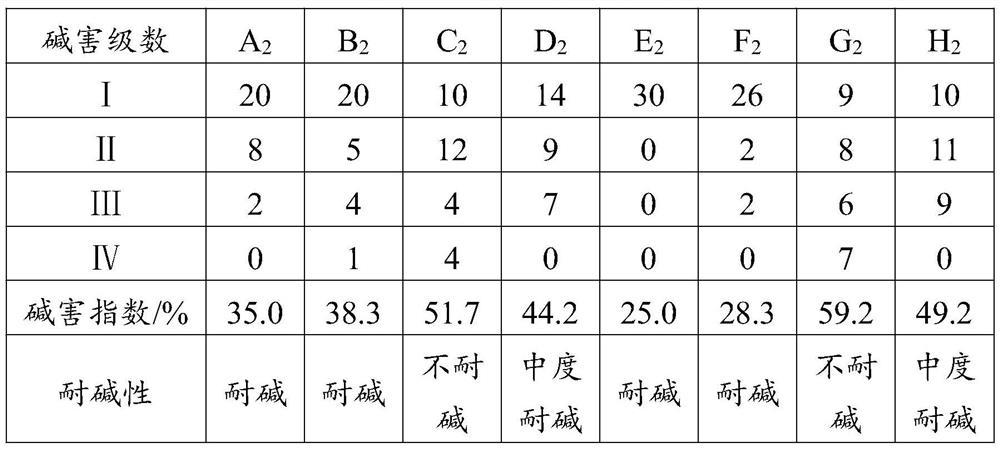Identification method for alkali-resistant kiwi fruit germplasm resources
An identification method, kiwifruit technology, applied in horticultural methods, botanical equipment and methods, instruments, etc., can solve problems such as malnutrition, limited land area, and impact on market competitiveness, so as to improve accuracy and reliability, and ensure stability Consistency and consistency, the effect of identifying the structure accurately and reliably
- Summary
- Abstract
- Description
- Claims
- Application Information
AI Technical Summary
Problems solved by technology
Method used
Image
Examples
Embodiment 1
[0060] In this embodiment, 8 kinds of kiwifruit germplasm resources collected are taken as an example, numbered respectively as a, b, c, d, e, f, g, and h.
[0061] The dormant branches of 8 kinds of kiwifruit germplasm resources grafted in the resource nursery in the previous year were selected, and the branches of appropriate length were cut as materials for tissue culture. According to the distribution of bud points, cut the clipped branches into 40cm branch segments, and ensure that each branch segment has 2 bud points. Then use a small brush to gently brush off the dust and debris on the branch sections, being careful not to touch the young shoots. Then soak the branch segment in water added with 0.5% Tween-20 for 10 minutes, take it out and wash it with distilled water for 5 times, and then soak it in water. When soaking, immerse 1 / 3 of the branch section in the water and keep the water depth. When the water level drops, add water in time. After soaking for 8 weeks, n...
Embodiment 2
[0066] The alkali damage simulation treatment result in embodiment 1 and comparative example 1 is carried out the statistical analysis of alkali damage index:
[0067] Among them, the grading standard of alkali damage index is as follows:
[0068] Ⅰ The number of roots is 4-5, the root length is 3-4cm, and the root diameter is less than 1.5mm;
[0069] Ⅱ The number of roots is 2-3, the root length is 1-2cm, and the root diameter is 1.6-2.0mm;
[0070] Ⅲ The number of roots is 1, the root length is 0.5-1cm, and the root diameter is 2.1-2.5mm;
[0071] ⅣNo roots, growth is inhibited, and plants are dwarfed.
[0072] The calculation formula of alkali damage index is: ADI=∑(x×n) / (4N)×100
[0073] x--alkali damage series at all levels;
[0074] n--the number of plants corresponding to the alkali damage series at all levels;
[0075] N—the total number of plants investigated.
[0076] The basis for the identification of alkali resistance is the ADI value: the larger the ADI va...
experiment example 1
[0096] The statistical analysis result of the alkali damage index of experimental example 1 is as follows:
[0097] Table 3 Statistical Analysis Results of Alkali Damage
[0098]
[0099] From the identification results in Table 3, it can be seen that a, b, e, f are alkali-tolerant germplasm resources, d, h are moderate alkali-tolerant germplasm resources, and c, g are non-alkali-tolerant germplasm resources.
PUM
| Property | Measurement | Unit |
|---|---|---|
| Height | aaaaa | aaaaa |
| Root length | aaaaa | aaaaa |
| Diameter | aaaaa | aaaaa |
Abstract
Description
Claims
Application Information
 Login to View More
Login to View More - R&D
- Intellectual Property
- Life Sciences
- Materials
- Tech Scout
- Unparalleled Data Quality
- Higher Quality Content
- 60% Fewer Hallucinations
Browse by: Latest US Patents, China's latest patents, Technical Efficacy Thesaurus, Application Domain, Technology Topic, Popular Technical Reports.
© 2025 PatSnap. All rights reserved.Legal|Privacy policy|Modern Slavery Act Transparency Statement|Sitemap|About US| Contact US: help@patsnap.com



